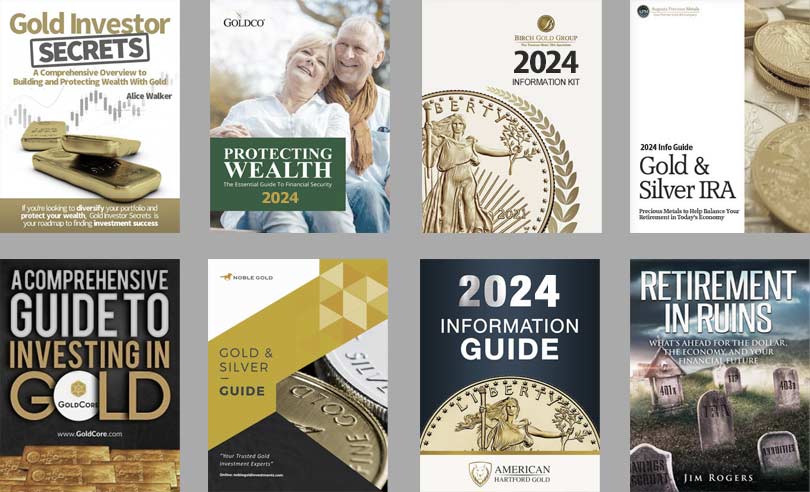Americans Fleeced Again in Another Round of Bank Bailouts
![]() Bullion.Directory precious metals analysis 27 March, 2023
Bullion.Directory precious metals analysis 27 March, 2023
By Clint Siegner
Director of Money Metals Exchange
There isn’t a vestige of the free market left when it comes to the country’s financial sector. Central control goes way beyond the fact that the Federal Reserve has been fixing the price of money (interest rates) for the past few decades.
The largest banks enjoy the explicit guarantee of the U.S. taxpayer. They are designated Systemically Important Banks (SIBs) – deemed officially too big to fail.
Bureaucrats invented the SIB designation during the 2008 financial crisis when fraud and mismanagement in real estate lending threatened to destroy many of the institutions lining Wall Street.
Now it appears regional bankers have joined this protected class. When the Silvergate, Silicon Valley, and Signature banks blew up, Janet Yellen stepped into the breach and declared no more! Officials will not allow any bank to fail if its collapse represents a risk of contagion.
The only bankers left to worry about consequences for the decisions they make are running the smallest and least significant banks.
American taxpayers have once again been pressed into service defending the way of life of those at the big banks.
Yellen has offered her assurance that banks, not citizens, will pay for programs like expanded deposit insurance through increased fees. She just assumes people are too dumb to figure out at the end of the day, average citizens are always on the hook.
It is worth reviewing what Americans got after the last round of bank bailouts and the regime of persistent subsidies to the financial sector since 2008.
It turns out they paid to transition banks into something a lot less useful in the economy, but they’re somehow just as likely to collapse and need another bailout.
The Federal Reserve took interest rates to zero and kept them there, giving banks access to essentially free money. Banks borrowed from the Fed’s discount window or took depositor funds and used this free money to buy Treasuries or Mortgage-backed securities with yields. Then they pocketed the interest rate spread.
The scheme was wonderful while it lasted – for the banks. There was no way to lose as long as rates stayed at zero.
It was, unfortunately, entirely counterproductive in terms of growing the real economy.
This money wasn’t lent to entrepreneurs and consumers who might do something useful with it.
It was simply a windfall for the financial sector and government budgets – both of which kept growing relative to the rest of the economy.
Today interest rates are on the rise, and the wheels are coming off. Bankers made the assumption that rates would remain low indefinitely. When that turned out to be wrong, the banks began sliding into insolvency as value of their vast holdings of bonds fell.
This problem is compounded by deposit flight at small and regional banks.
Clients are nervous about what they see happening to balance sheets, and they are moving deposits into the “too big to fail” banks.
Now the government is riding to the rescue, once again. If the expanded deposit guarantees and special lending facilities don’t do the trick, Americans can be sure that Janet Yellen and the Fed will roll out even larger and more expensive interventions.
The U.S. economy is slowing down and many expect the coming recession will be a doozy. Banks may soon have to contend with declining demand for new loans and rising loan defaults on top of the current troubles with their balance sheets.
There is no question letting banks collapse would be devastating to the economy. It would be worse today than 15 years ago since the stimulus-fed financial sector has only grown larger as a percentage of the overall economy.
The bailouts and the lack of consequences for behavior ranging anywhere from incompetent to criminal could end in an epic financial disaster that ultimately collapses the U.S. dollar.
A question is whether officials will be able to artificially prop up the banks one more time… or if the final reckoning is now upon us.
Clint Siegner


Clint Siegner is a Director at Money Metals Exchange, a precious metals dealer recently named “Best in the USA” by an independent global ratings group.
A graduate of Linfield College in Oregon, Siegner puts his experience in business management along with his passion for personal liberty, limited government, and honest money into the development of Money Metals’ brand and reach. This includes writing extensively on the bullion markets and their intersection with policy and world affairs.
This article was originally published here










 Material provided on the Bullion.Directory website is strictly for informational purposes only. The content is developed from sources believed to be providing accurate information. No information on this website is intended as investment, tax or legal advice and must not be relied upon as such. Please consult legal or tax professionals for specific information regarding your individual situation. Precious metals carry risk and investors requiring advice should always consult a properly qualified advisor. Bullion.Directory, it's staff or affiliates do not accept any liability for loss, damages, or loss of profit resulting from readers investment decisions.
Material provided on the Bullion.Directory website is strictly for informational purposes only. The content is developed from sources believed to be providing accurate information. No information on this website is intended as investment, tax or legal advice and must not be relied upon as such. Please consult legal or tax professionals for specific information regarding your individual situation. Precious metals carry risk and investors requiring advice should always consult a properly qualified advisor. Bullion.Directory, it's staff or affiliates do not accept any liability for loss, damages, or loss of profit resulting from readers investment decisions.

Leave a Reply